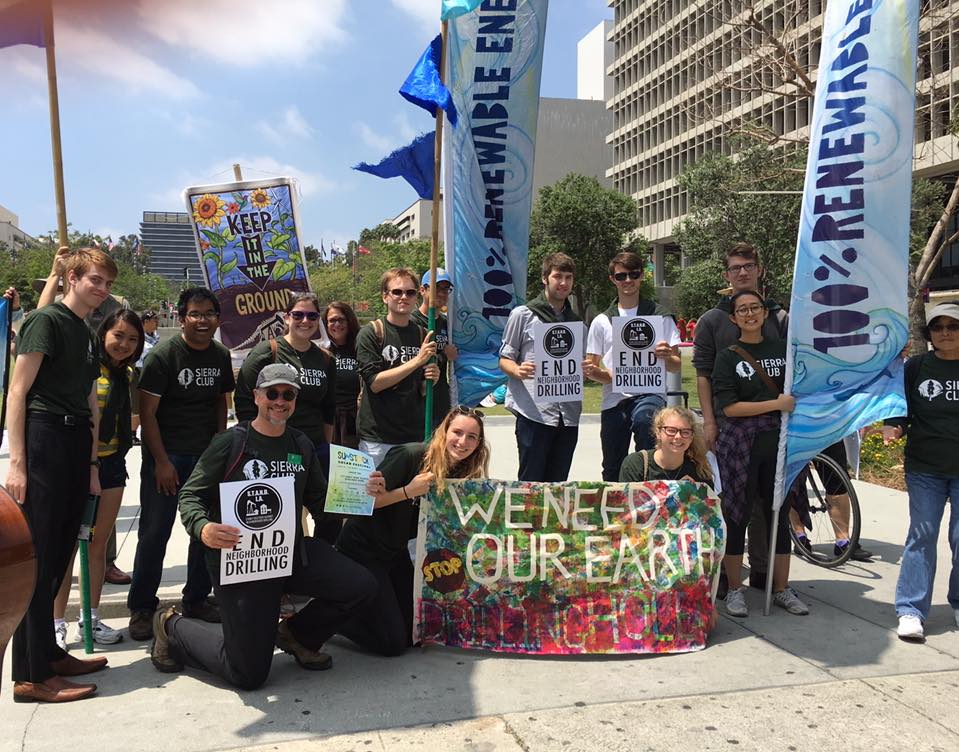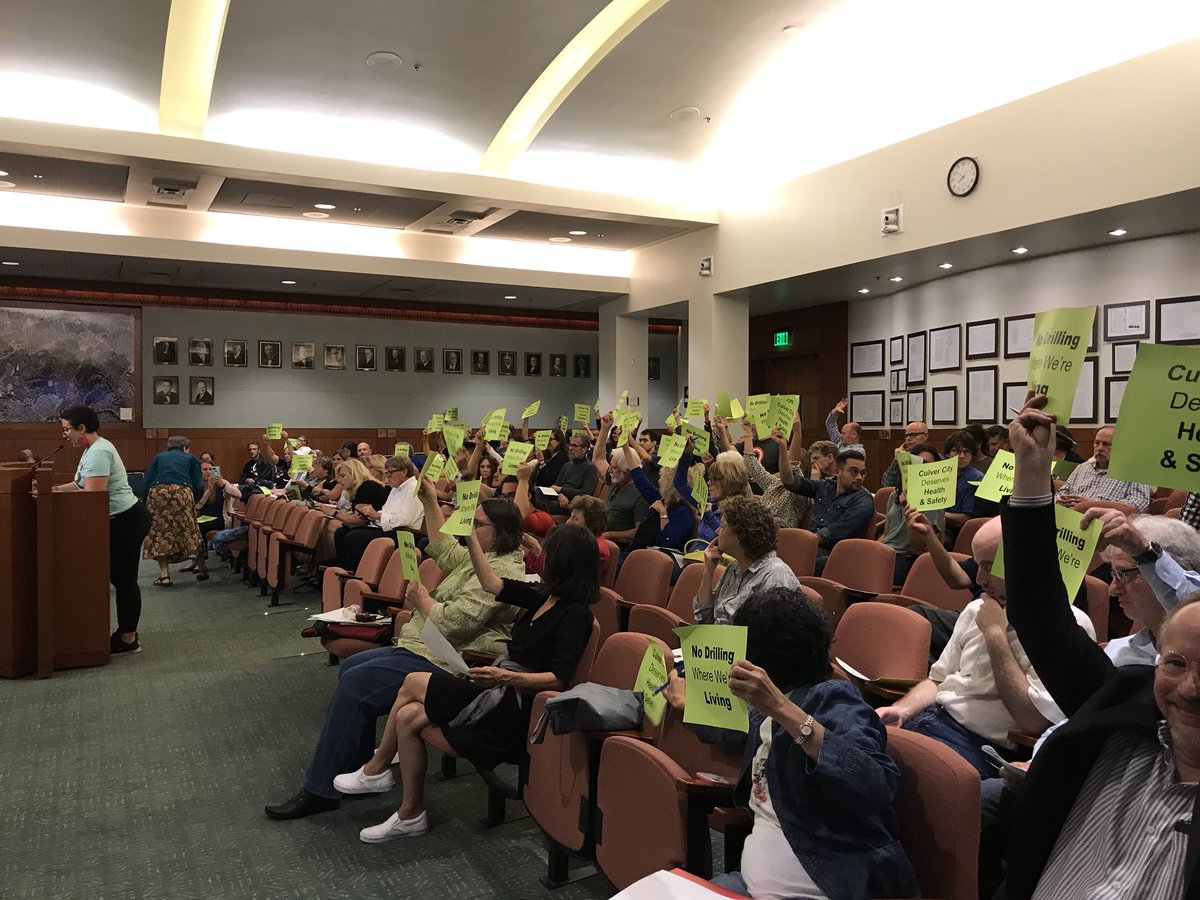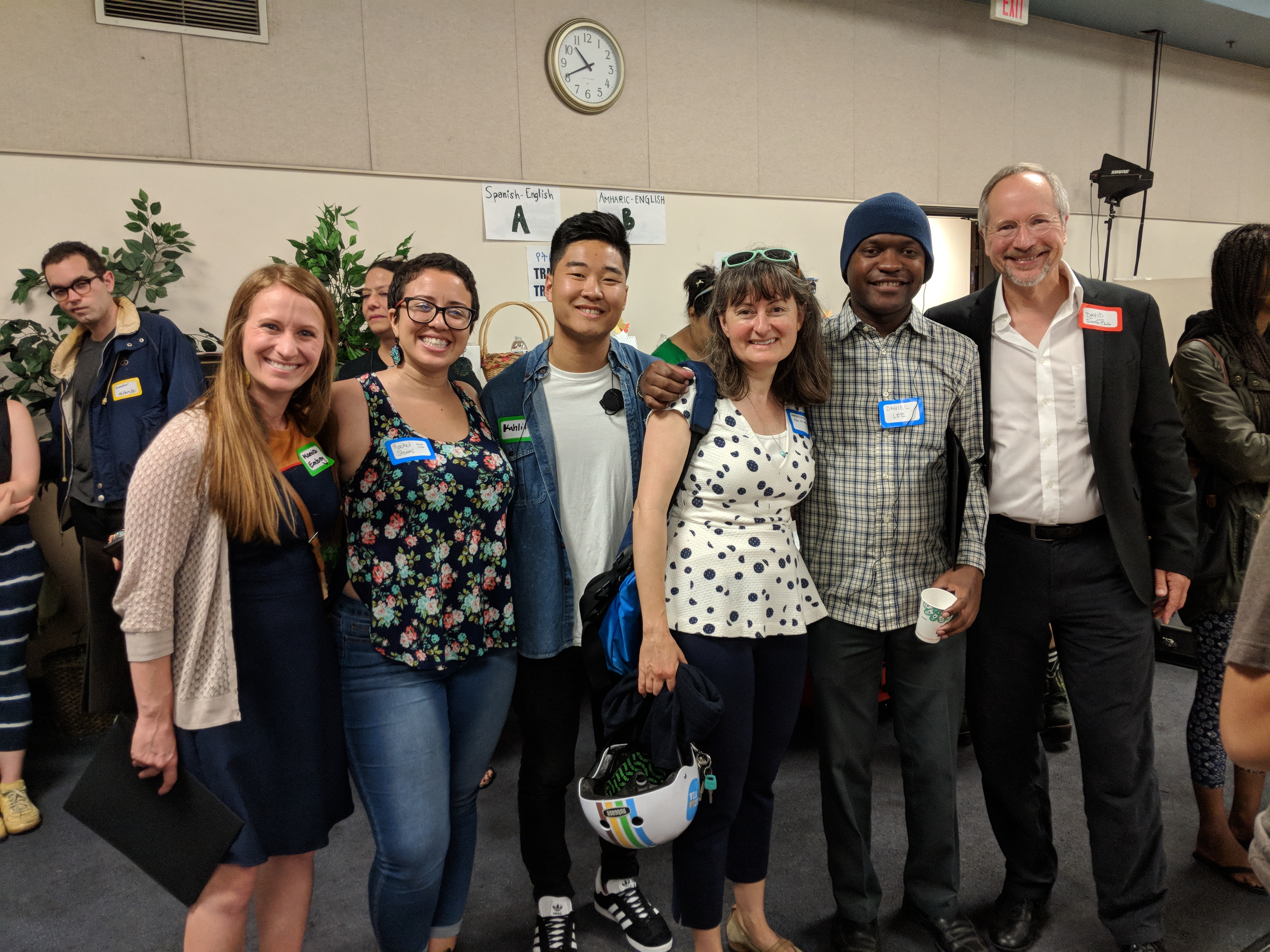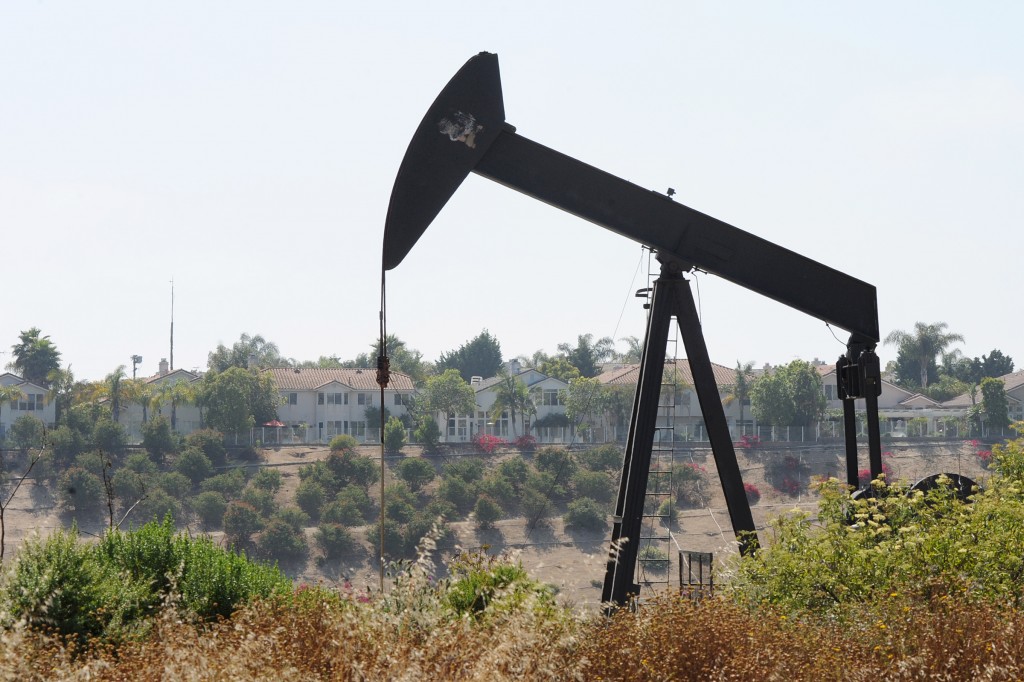Southern California has long been the toxic playground of the oil extraction industry, but a growing movement of grassroots activism across the region is organizing to change that. Just last week, community members in Culver City successfully lobbied their city council to commission a study on how to phase out the oil field in their backyard. This monumental vote is a testament to the power of communities fighting back against the interests of corporate polluters that threaten their health and safety. It is especially significant because it marks a shift in direction for Culver City, which before this vote was planning to approve regulations to expand dangerous neighborhood oil drilling.
Los Angeles isn’t just palm trees and Hollywood stars -- shockingly, millions of people in Los Angeles live directly adjacent to oil extraction operations. There are 68 active oil fields in Los Angeles County, with thousands of drill sites located in densely populated urban neighborhoods adjacent to homes, schools, daycares, parks, hospitals, and other places where people live, work, play, and study. Some people live as close as three feet to the boundary of drill sites and as close as 60 feet to active oil wells and oil workers in hazmat suits.
In addition to being a major contributor to greenhouse gas emissions that drive global climate change, neighborhood oil drilling exposes Los Angeles residents to toxic chemicals and smog-forming gases. These result in a host of health issues for neighboring communities as they are exposed to benzene, toluene, ethylbenzene, xylenes (BTEX), and other compounds known as #thedirtydozen. Many of these toxins are known to cause respiratory illness, cardiovascular disease, leukemia, lymphoma, lung cancer, nervous system damage, reproductive and endocrine disruption, and premature death. Neighbors to urban oil drilling suffer disproportionately from these health effects.
Urban oil drilling in Los Angeles is truly an environmental justice crisis, with the most devastating threats impacting the most vulnerable families. Many of the communities most affected by neighborhood oil wells have high concentrations of people of color and low-income households. A 2014 study by Liberty Hill found that of the more than 120,000 people who live within 1,500 feet of an active oil well in the City of Los Angeles, 74.4 percent were people of color and 42.3 percent were living 200 percent below the poverty level. Many neighborhoods with urban oil drilling operations have already been identified as high-risk in cumulative-impact screenings because off their exposure to environmental hazards and pollution. Oil field operators are hoping to continue to expand their operations in Los Angeles, despite these devastating consequences. But empowered communities are raising their voices to put an end to this dirty and dangerous practice.

Photo: Sierra Club Angeles Chapter Clean Break Committee
A growing movement is calling for an end to urban oil extraction with their demand: “No drilling where we’re living.” Activists across Los Angeles County are organizing their communities to come together and demand that their local government leaders phase out neighborhood oil drilling.
In Culver City, a town of 40,000 people in the western part of Los Angeles County, the Sierra Club’s Clean Break Committee has been actively organizing our members for years alongside allied organizations to call for more stringent regulation of the Inglewood Oil Field, the largest urban oil field in the United States. In the City of Los Angeles, an environmental justice coalition called Stand Together Against Neighborhood Drilling in Los Angeles, or STAND-LA, has formed to represent neighborhoods that are facing urban oil drilling. The coalition is calling on the Los Angeles City Council to pass a 2,500-foot human health and safety buffer to protect Angelenos from drilling in their backyards. The Sierra Club is a proud supporter and ally of STAND-LA.

Photo: Ben Goloff
The recent vote to change course on oil field regulation in Culver City is evidence of the growing power and momentum of the push to make oil drilling in Los Angeles a thing of the past. More than one million people live within five miles of the Inglewood Oil Field, with about 10 percent of the oil field lying within the borders of Culver City. Due to public outcry over the health, safety, and environmental concerns when noxious fumes leaked from the oil field in late 2005, Culver City's city council began a process to oversee more robust regulation of the Inglewood Oil Field. In fall 2017, the city proposed a draft plan with recommendations that included allowing expanded drilling, including almost doubling the number of well sites in the next 15 years.
The draft plan sparked massive protest. Community members submitted over 1,000 public comments, testified to the city council, and packed in public meetings to demand that the city develop stronger regulations. They also got to work engaging in the city council elections and, in April 2018, two strong environmental champions that were endorsed by the Sierra Club were elected to Culver City City Council.
Last week, more than 120 community members attended the Culver City Council Chambers for a community meeting on the planning process. Dozens of community members testified, calling on the city to protect the community's health and environment and supporting a subcommittee proposal to commission a study on how to phase out drilling. The only speaker who testified in favor of expanded drilling was a representative for the oil operator and, during her statement, community members held up green signs that read “No Drilling Where We’re Living” and “Culver City Deserves Health and Safety” in opposition. The five-member council voted unanimously in support of the subcommittee recommendations and the crowd erupted in applause and cheers. The Sierra Club and our members will continue to support and engage the Culver City City Council on this effort to ensure that the residents in Culver City and all across Los Angeles County are not being exposed to toxic oil drilling.

Photo: Monica Embrey
Culver City sent a strong message about the direction for oil drilling in LA, and demonstrated how years of organizing to end neighborhood drilling is gaining power. Now, instead of fighting against expanding oil operations, the community can begin to envision a healthy, sustainable, and safe beneficial use for that area.
It’s time for elected leaders in the City of Los Angeles, Los Angeles County, and the entire State of California to take a lesson from Culver City and take meaningful action for a healthy climate and communities. No drilling where we’re living!
